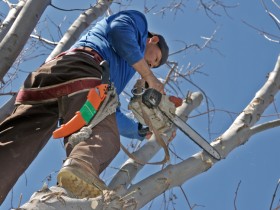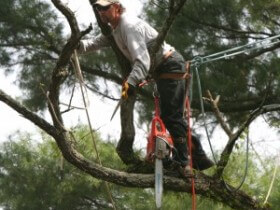
Although it can occasionally feel like a daunting task, growing or expanding your lawn’s grass has become more and more of an accessible and reasonable task. Although understanding how to choose the right type of grass seed may seem confusing at first, there are a number of resources available that will make making the right choice all that much easier! Hopefully, after reading through this guide, you’ll have a better idea of what kind of grass seed is best for your lawn, and how to go about planting it!
Grass Seed
When trying to buy grass seed, it’s important to determine what kind of grass seed best suits your needs and situation. For most of the better types of grass seed, there will be easy and immediate identifiers that you can see that will narrow down the selection process.
The National Turf Evaluation Program, also known as the NTEP, has a rating system for a variety of grass seeds that determines their effectiveness in terms of a number of features (e.g., resistance to insects, drought, and disease, and how colorful the green tones of the grass will be).
In addition to this rating, there are a variety of types of grass seed that are better for different temperatures, meaning that certain grass seeds will perform better in northern states, while others will be better for southern states. Based on where you’re living and planning to start this new garden, you should take a quick look into the variety of seed types and find the best type of grass seed for you.
Although many of the grass seeds that are rated higher by the NTEP will most likely also come with higher prices, these prices are definitely worth it for those hoping to have noticeable and drastic results with growing and improving their lawn. Make sure that you choose the best type of grass seed for your lawn before you start prepping your lawn for growth.
Soil and Preparation
In addition to choosing the right type of grass seed, you should also take into consideration the viability of your soil. You can do this by testing the pH of the soil (using a pH tester), and aim to have soil that’s leaning more towards acidity (ideally, between 6 and 7 pH)—which is the preference of a majority of the grass types you’ll probably be working with.
Once you’ve selected the grass seed you’re going to use for your lawn and know more about your soil, you’ll have to take into consideration the final stages of preparation that are involved prior to planting and growing the grass seed. This should be relative to the state of your lawn; it’s important to prepare based on whether you’re hoping to grow out an already-existing lawn or to restart the growth of a no longer existing one.
It’s also important to consider what time of the year will be best for planting your new garden. This is particularly important because of the detrimental effect that non-planting seasons can have on your budding lawn. The best seasons for planting grass seed are the fall and spring. But in both cases, their proceeding seasons can have negative effects on the grass’ growth process if the seeds are planted too late—winter can cause freezing and summer can cause drying, both resulting in less healthy and plentiful outcomes.
Starting a Lawn vs. Adding to a Lawn
When looking to add to an already existing lawn, you’ll need to prepare a number of things involving your grass to be able to get the best possible results. It’s good to make sure to remove dead grass and any excess weeds, twigs, or branches. The soil should also be evened out in areas that have less grass while making sure that the soil is somewhat loosened to allow for the grass seeds to grow and be fertilized more easily.
It’s also worth considering mowing the majority of the lawn, to make sure that the grass from the seeds is the most visible rather than the pre-existing grass. For those who need to mow a considerable amount of their lawn, you may want to look into finding a great riding lawn mower to get the job done quickly and effectively!
For those looking to grow a completely new lawn, there are a few more factors to prep for. Similarly to with an already existing lawn, make sure to remove any small branches, twigs, or miscellaneous rubbish that has built up on your lawn over time.
Try to soften up and even out most of the soil, making sure that soil is not clumping up too largely anywhere on the lawn and to prevent certain areas from building up or collecting larger amounts of water. In addition to dispersing the soil, you’ll need to make sure that the top layer of soil is relatively sparse and malleable to allow for ample growth of the grass seeds.
Planting, Distributing, and Watering
Once you’ve successfully prepped the soil and lawn for growing the grass seeds, it’s time to start planting them! When planting the seeds, make sure to be meticulous with your distribution of them. For most of the lawn, you may want to use devices like a lawn spreader to be able to evenly distribute seed—ensuring that you’re not placing too many seeds in the same area.
It’s important to make sure that there are neither too little nor too many seeds in one area, using a rule of 13 - 18 seeds per square inch. For some people, this means that it’ll be easier to spread the seeds into the lawn by hand. Once the grass seeds have been evenly spread, you’ll need to cover them with a thin layer of the soil that you’ve previously softened and loosened up. However you do it, make sure the seeds are evenly distributed, so that all of the resulting grass will be evenly toned, thick, and healthy!
It’s up to you whether you choose to use additives that can improve the growing process of the grass seeds—but in most cases, merely tending to the seeds and monitoring their growth should be more than enough to see fruitful results. In terms of tending to the garden, you’ll need to monitor the grass seeds closely for the first month of growing, making sure to water the grass at least daily. However, be sure that you do not overwater it.
As long as the grass and soil consistently maintain a reasonable amount of moisture, you’re sure to see great results within a month and a half to two months. So hopefully, after reading this, you’ve got a much better idea of how you’re going to go about planting your new garden, and of how to keep that garden well maintained and lively. As long as you pick the best garden seed for your situation, properly prep the soil, and consistently water and oversee the state of the grass seeds, you’ll have a beautiful new garden filled with healthy grass in no time!



